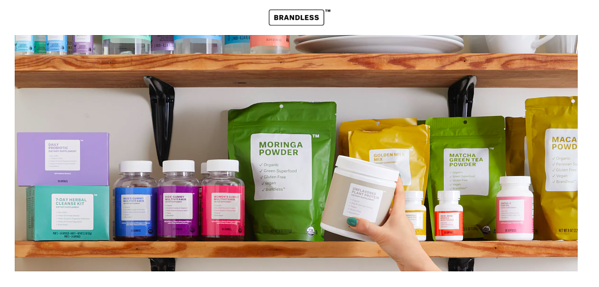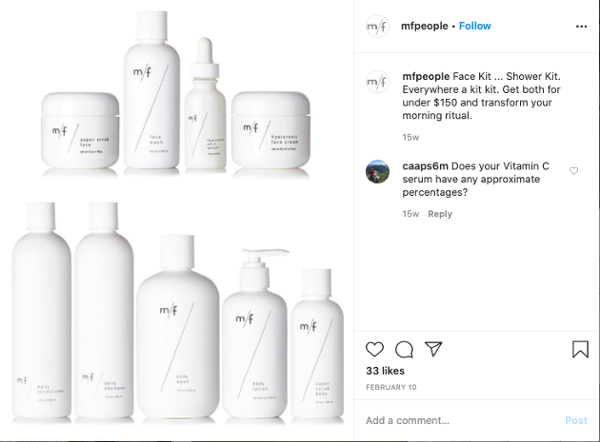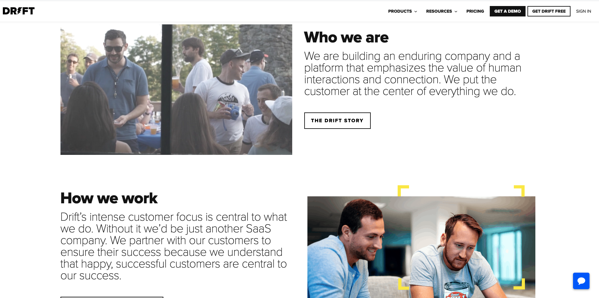With so many branding strategies in marketing to choose from, it may be difficult to pinpoint which brand strategy types work well for your business.
Explore this deep dive into the types of brand strategies with examples to learn how to hone the optimal strategy for your business.
Once you learn how to position yourself as a brand and take advantage of brand strategies for marketing, you will be on your way to earning loyalty, recognition, equity, awareness – and most importantly revenues.
Let’s get started!
Key Takeaways:
- Branding strategies help businesses establish identity, drive customer loyalty, and differentiate from competitors.
- Types of branding include personal, product, corporate, service, co-branding, online, and no-brand branding, each catering to specific goals.
- Critical elements of a successful branding strategy involve consistency, adaptability, storytelling, differentiation, and audience alignment.
- Best practices such as leveraging visuals, humanizing your brand, and maintaining customer engagement strengthen branding efforts.
- Thoughtful branding can significantly impact brand recognition, customer trust, and long-term revenue growth.
But First, What Is a Branding Strategy?
A branding strategy is a comprehensive plan that outlines how a company establishes and develops its brand to achieve specific goals.
This strategy is a critical component of a company’s overall marketing plan, as it focuses on building and maintaining a strong, consistent brand identity across all customer touchpoints.
Branding often involves creating critical elements such as the company or product logo, your business mission statement, and a suitable design that is consistent throughout each marketing communication channel – whether that’s social media or business cards.
It’s important to remember that your brand is a representation of who you are as a business, and using effective brand strategies can help your business grow and reach beyond your target audience – into new markets and new customer bases.
A good place to start in assessing your current brand strategy is with a SWOT analysis – which can be used to analyze and identify the weaknesses and strengths of the current way in which you present your business to your customers.
The 10 Key Elements Of A Branding Strategy
When it comes to branding strategies in marketing, the following elements are typically involved:
- Brand Identity: This includes the visual elements (logo, color scheme, design style) and the verbal elements (brand voice, messaging) that make a brand recognizable and memorable. It’s about how a brand presents itself to the world.
- Brand Positioning: This involves defining where your brand sits in the marketplace and in the minds of consumers, especially in relation to competitors. It’s about carving out a unique space for your brand based on factors like quality, price, values, or specific differentiators.
- Target Audience: Identifying and understanding the target audience is crucial. This involves researching and defining the demographics, psychographics, and behavior patterns of the consumers most likely to engage with the brand.
- Brand Story and Messaging: This is about creating a compelling narrative that connects the brand with its audience. It includes the brand’s history, mission, values, and the key messages it wants to communicate.
- Brand Experience: This encompasses all the interactions people have with the brand, from advertising and customer service to the actual use of the products or services. The goal is to ensure a positive, consistent experience across all touchpoints.
- Brand Differentiation: This involves highlighting what makes the brand unique and different from competitors. It’s about establishing a unique selling proposition (USP) that sets the brand apart.
- Brand Loyalty and Advocacy: Part of the strategy is to not only attract customers but also to retain them and turn them into brand advocates. This involves fostering strong, positive relationships with customers through engagement, quality experiences, and loyalty programs.
- Consistency: A key part of branding strategy is maintaining consistency across all channels and touchpoints, ensuring that the brand is represented in a unified way that reinforces its identity and values.
- Adaptability: While consistency is important, a good branding strategy also allows for adaptability to respond to market changes, customer feedback, and emerging trends.
- Measurement and Evolution: Finally, a branding strategy should include methods for measuring its effectiveness, such as tracking brand awareness, perception, and customer loyalty, and evolving the strategy as needed.
7 Types of Branding Strategies with Examples
To help you get you started, here are 7 types of branding strategies that have the potential to build brand equity for your business – with examples to illustrate how these brand strategies work in practice.
1. Personal Branding
Personal branding describes branding that is used for an individual person, instead of branding for a whole business.
This type of branding is often used to establish a person’s character, personality, or work as a brand.
Celebrities, politicians, thought leaders, and athletes often use this form of branding to present the best version of themselves to the public – often spending millions in the process such as Tony Blair’s now infamous focus-group work ahead of the 1997 UK General Election.
For example, Seth Godin, entrepreneur and author of over 20 marketing books, positioned himself as a business and marketing expert.
Seth has a recognizable personal brand, and individuals now associate him with his short blog posts that pinpoint one idea at a time. People want to hear from Seth Godin rather than a company or organization due to the effectiveness of his personal brand.
2. Product Branding
This is one of the most popular branding types, being so prevalent people interact with it on a near daily basis in their lives.
Product branding focuses on making a single product distinct and recognizable, this can take use through the use of prominent symbols (such as Toyota’s bull), unique color schemes (such as the ubiquitous orange and white of Bueno confectionary), or designs (such as the unmistakable shape of a VW Beatle) – all of which are an essential part of product branding to help your customers identify your product easily.
Whether you’re recovering from an epic night out or getting hyped for the next one, #RehabWildBerryTea is your go-to ride-or-die
Available now ➡️ https://t.co/wkd7c51sxk#MonsterEnergy #MonsterRehab pic.twitter.com/VTaoPlz9bU
— Monster Energy (@MonsterEnergy) July 30, 2023
A leading example of product branding can be found in leading beverage Monster Energy, the drinks have very colorful and distinct packaging and logos that make it easily distinguishable from Red Bull energy drinks – while always keeping within a similar product design.
3. Corporate Branding
Corporate branding is a core value of business, forming both the heart and philosophy that a new or emerging business develops to present itself not just to the world, but also its own employees.
Effective corporate brands often seek to display and communicate the company’s mission, corporate personality, and core values in each point of contact it has with prospective customers, current customers, and past customers.
A leading example from the sports world, Nike’s core values and mission are recognizable across all of their platforms and products.
Nike’s mission statement is “To bring inspiration and innovation to every athlete in the world.” And its slogan, next to their famous swoosh check mark logo, is “Just do it”.
As a corporate brand, Nike positions themselves as a brand for athletes, sports enthusiasts, and anyone who is passionate about fitness – they also make it clear that they believe anyone can be an athlete.
4. Service Branding
Service branding leverages the needs of the customer to create an effective opportunity for communicating the brand image.
Companies that use service branding seek to provide their customers with world-class service, to the extent that they build a reputation based upon the quality of service they provide.
This involves aiming to use excellent customer service as a way to provide value to their customers and create a long-lasting brand identity with customers.
A top example of this can be found in Emirates Airlines, which have built a global reputation of the back of industry-leading hospitality and customer service; enabling them to charge a premium price on airline tickets.
5. Co-Branding
Co-branding is a form of branding that connects companies together, and leverage their shared markets and customer bases to expand brand identity.
Essentially, co-branding is a marketing partnership between two or more businesses – this helps brands impact each other positively, and it may result in one growing its business, spreading brand awareness, and breaking into new markets.
For example, Frito Lay and Taco Bell came together and made the Doritos Locos Taco that appealed to both audiences.
This instance is very common among cryptocurrency project promotions, which often seek ‘integration partnerships’ to connect their project with a bigger ecosystem’s marketing machine.
6. Online Branding
Online branding, also known as internet branding is perhaps the most important aspect of branding strategy in the 21st Century.
The objective of online branding strategy is to help businesses to position themselves as a part of the wider and increasingly crowded online marketplace.
This type of branding includes a company’s website, social media platforms, blogs, and other online content.
Most companies use some aspect of online or internet branding in today’s marketplace – with prominent examples such as CoinDesk building a brand off their online reputation.
7. No-Brand Branding
This type of branding is also known as minimalist branding, these brands are often generic brands that seek to let their products speak for themselves without all the extras many others provide their consumers with.
Some of the most noteworthy no-branding branding examples include Brandless and m/f people.
As you can see on Brandless‘ website, their packaging, colors, and overall aesthetic is very simple, this aligns with their mission of providing fairly priced food to people without a typical brand.
Despite the fact that Brandless recently announced its closure, it is an excellent example of no-brand branding that saw great success for several years.
m/f people adopts simplicity in everything, from their branding and packaging to their product designs. For example, their skincare products are packaged in bottles with black and white colors and a simple font.
This decision to opt for simplicity aligns with their commitment to making gender-neutral products and pursuing their overall mission: “We aim to make life simple, so you can focus on what matters most.”
They don’t need loud colors and flashy font. They want a minimalistic appeal.
How to Select the Best Branding Strategies in Marketing For Your Business
Selecting the appropriate branding strategies for your business is a nuanced process that varies significantly depending on several key factors.
It’s important to recognize that what works for one company, even within the same industry, may not be the best approach for another.
Here are some critical considerations to guide you in choosing a branding strategy that aligns with your unique business needs:
1. Define Your Brand Identity
Before you select the proper brand strategies for your business, you should define your brand identity. This involves asking yourself and others involved in the marketing and sales process a series of questions, such as:
- What are my company’s mission and core values?
- If I had to describe my company in three words, what would they be?
- What do I want to be known for in the marketplace?
- What kind of difference do I want to make in my industry?
- What do I want my brand to look like visually?
Asking yourself these questions helps you to determine your goals and direction in the marketplace as a unique brand.
2. Determine Your Brand Objectives
Once you identify your brand identity and answer the key questions mentioned above, you should be able to determine your brand objectives.
For example, your objective may be to position yourself as an industry leader in a set period of time or to increase customer interactions through reviews, website visits, or online product purchases.
This way, you’ll be able to select a brand strategy that aligns with your business goals and objectives.
3. Define Your Brand’s Audience
The best way to define your target audience is to consider what they’re interested in, where they’re located, their age, what they think of your brand currently, and how you will attract them to your services or products.
Knowing your target market allows you to gather enough data to solidify your message and select the correct brand strategy that helps you appeal to your target audience.
4. Consider Your Industry
Each industry likely has different goals and objectives it would like to achieve. Each brand strategy has different things to offer your business.
However, not every strategy will fit your specific industry.
To help you decide which brand strategies to choose, you may consider conducting a competitive analysis with the competitors in your industry. Conducting such an analysis will help you to uncover your opportunities and threats in your respective marketplace.
5. Assess Your Brand’s Personality
Consider what your brand stands for and how it should be perceived by consumers.
Does your brand have a more professional and corporate feel, or is it playful and edgy?
Aligning your branding strategy with your brand’s inherent personality is key to maintaining authenticity and consistency.
6. Examine the Competitive Environment
Look at the branding strategies employed by your competitors.
What seems to be effective in your industry? How can your brand stand out?
This doesn’t mean copying what others are doing, but rather understanding the landscape and finding your unique position within it.
7. Leverage Your Unique Selling Proposition (USP)
Identify what makes your brand or product unique and use this as a cornerstone of your branding strategy. This could be a particular feature of your product, your company ethos, or even your origin story.
8. Consider Your Resources
Be realistic about the resources (time, budget, manpower) you have available for branding. This will often dictate the scale and scope of your strategy.
A smaller business might focus on community engagement and local branding, while a larger enterprise might invest in a broad-based digital branding campaign.
9. Flexibility and Adaptability
The market and consumer preferences are always evolving.
Ensure that your branding strategy is flexible enough to adapt to changes without losing its core identity.
10. Long-Term Vision
Think about where you want your brand to be in the future.
A good branding strategy not only addresses the current market situation but also sets the foundation for future growth and evolution.
11. Consistency Across Channels
Ensure that your branding is consistent across all platforms and touchpoints. This includes your online presence, advertising, packaging, and customer service.
12. Feedback and Iteration
Finally, be open to feedback and willing to make adjustments. Monitor how your target audience responds to your branding efforts and be prepared to refine your strategy accordingly.
In summary, choosing the right branding strategies for your business should be a tailored approach that considers your specific goals, audience, brand identity, industry dynamics, and available resources.
It should be a strategic, thoughtful process that lays the groundwork for building a strong, enduring brand.
Best Practices for Building Your Brand
It takes time to build a brand, and as your credibility and reputation grows, your brand strengthens both in content creation and public consciousness.
Follow these best practices to expedite this process and foster trust with your audience.
Perfect Your Use of Visual Content
Visuals are an important part of branding and marketing.
In fact, according to a study conducted by HubSpot, visuals are processed and retained by individuals at faster rates than text. And visuals such as infographics are 3X as likely to be shared on social media over other forms of content.
Visuals make up a large part of what your prospects and customers remember about your brand. Make sure your visuals are related to your overall brand theme and core values.
This provides you with brand consistency and makes it so that your customers can easily identify your brand later on when they see similar images.
For example, the manufacturing company, General Electric, provides its customers with engaging and interesting visuals on its social media channels. This visual content helps them to tell their story to consumers and it establishes their brand identity.
Their Instagram shows real people using their products. Their captions provide descriptions of specific products, like their a-CT7 engine mid-frame in the bottom left image.
Their post describes what the engine is, where it’s made (in their GE Additive Pittsburgh Center), and how their team simplified the assembly process. They do a great job of educating their audience about their offerings and telling a story that is visually appealing.
Humanize Your Brand
Making your brand more human means finding something to believe in and marketing that message to your prospects and customers.
The best way to do this is to find unique solutions to your consumers’ problems by understanding that their problems have three parts: external, internal, and philosophical.
When you identify their needs and problems, you can begin to weave a story into your marketing messages that provides your customers’ with value and makes them believe that you have the answers to their problems.
For example, the SaaS company Drift, provides its prospects and customers with the idea that the internet is a conversation. This helps them to tell their story that “emphasize(s) the value of human interactions and connections” as stated on the about us page of Drift’s website.
Although they sell software that isn’t very “human,” they market and appeal to people through their stories and what they believe in. They do these things while addressing their customers’ internal, external, and philosophical problems regarding the internet and software.
Keep the Conversation Going
A large part of positioning yourself as a strong brand includes getting people to talk about your brand and contributing to the conversation.
Keeping the conversation going involves having a strong online presence that allows you to post and comment about the things that your brand cares about.
Give back to your customers and thank them for remaining loyal to your brand. Direct interaction with your prospects and customers in person and via phone, email, or social media helps you to maintain and increase engagement, which leads to building a strong brand.
For example, the tech giant Google perfects their customer and engagement by keeping the conversation going with its customers on social media sites such as Twitter and Instagram. They respond directly to customer complaints and concerns on Twitter and post meaningful images on Instagram that keep people engaged and talking.
The Role of Emotional Branding in Customer Loyalty
Emotional branding is the art of building a deeper, emotional connection with customers by appealing to their feelings, values, and aspirations. It goes beyond showcasing a product or service, focusing instead on creating memorable experiences that resonate personally with consumers.
Why Emotional Branding Works
- Creates Personal Connections: Emotional branding makes customers feel understood and valued, building trust and long-term loyalty.
- Differentiates from Competitors: By aligning with customers’ emotions, brands stand out in crowded markets.
- Encourages Advocacy: Customers emotionally connected to a brand are more likely to become vocal advocates, sharing their experiences with friends and family.
Examples of Emotional Branding
- Nike: By using motivational storytelling in campaigns like “Just Do It,” Nike inspires consumers to believe in their potential, associating the brand with empowerment and perseverance.
- Dove: Through campaigns like “Real Beauty,” Dove appeals to self-confidence and authenticity, resonating emotionally with its audience.
How to Use Emotional Branding
- Understand Your Audience: Conduct research to uncover your customers’ values, needs, and pain points.
- Craft a Story: Develop a brand narrative that aligns with those emotions and values.
- Maintain Authenticity: Ensure your branding aligns with genuine actions and values to avoid appearing disingenuous.
- Leverage Visuals and Messaging: Use compelling imagery, relatable language, and evocative campaigns to reinforce the emotional connection.
Mistakes to Avoid in Branding Strategies
A successful branding strategy requires attention to detail, consistency, and a deep understanding of your audience. Avoid these common pitfalls to maximize your brand’s potential:
1. Lack of Consistency
Inconsistent messaging or visual elements can confuse customers and dilute brand identity. Ensure that your logo, tone, and messaging remain uniform across platforms and touchpoints.
2. Ignoring the Target Audience
Failing to understand your audience’s preferences and needs results in irrelevant campaigns. Use data and customer feedback to tailor your strategies effectively.
3. Overcomplicating the Brand Message
A brand message that’s too complex or vague can alienate potential customers. Keep your messaging clear, concise, and aligned with your core values.
4. Neglecting Emotional Appeal
Brands that focus solely on features or pricing may fail to engage customers on a deeper level. Include elements that evoke trust, joy, or other emotions.
5. Failing to Adapt
In a fast-evolving market, rigid branding strategies risk becoming outdated. Stay open to change and be willing to adapt to market trends and customer feedback.
6. Overlooking Internal Branding
Your employees are your brand ambassadors. A lack of alignment between internal culture and branding can create inconsistency and erode trust.
7. Ignoring Feedback and Metrics
Without monitoring brand performance or listening to customer feedback, you risk repeating mistakes and missing opportunities for growth.
How to Avoid These Mistakes
- Create a branding guideline to ensure consistency.
- Regularly review customer data to refine targeting and messaging.
- Use KPIs like brand awareness, customer retention, and engagement to assess performance.
- Keep your brand story adaptable to align with market trends while maintaining authenticity.
By steering clear of these common errors, your brand can build a strong, lasting connection with its audience.
Wrapping Up
Building a brand includes various elements that require patience to develop and execute.
As you move forward with understanding the needs of your business and what you hope to deliver to your consumers, you will be able to select the right branding strategies for marketing for your business, and your brand will grow and delight your customers.
References:




